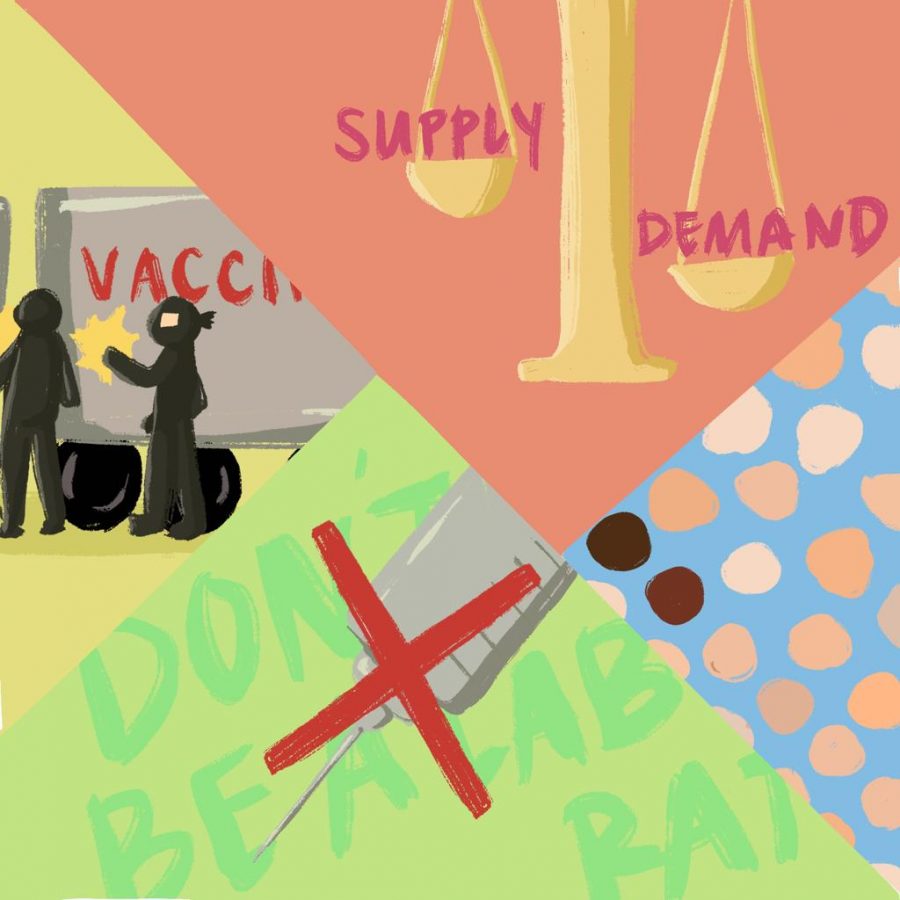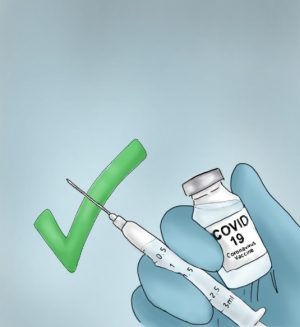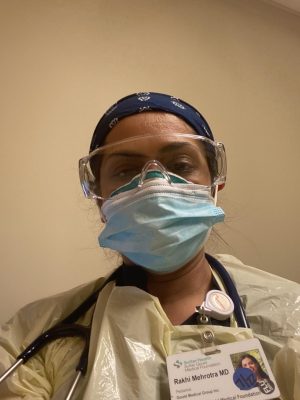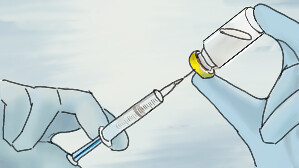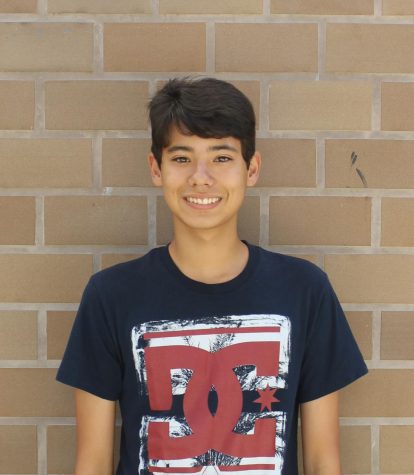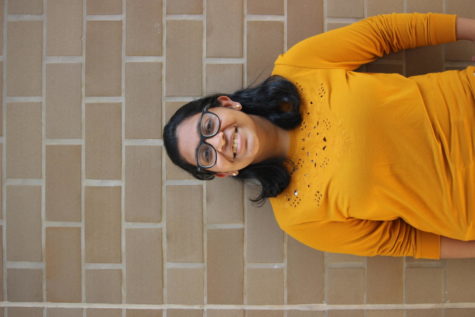Obstacles to California’s vaccine rollout prevent a speedy recovery
Athmika Sriram
Numerous obstacles prevent California’s distribution from being effective and efficient
March 23, 2021
Despite claims from Gov. Gavin Newsom that all Californians will have a vaccine by April 28, numerous obstacles are preventing this projection from becoming a possibility.
A vaccine tracker by the Los Angeles Times finds that as of now roughly 24 percent of Californians have received a vaccine, totaling almost 14 million people. In order to achieve herd immunity, many scientists claim that 85 percent of the 40 million people in California must be vaccinated.
Yet, California seems to be lagging behind, as the same tracker reports that the state is 34th in all states and territories in terms of vaccine rollout.
Thus when vaccines are in such high demand, it begs the question of why more vaccines aren’t available and what is stopping effective distribution. This ineffectiveness can be boiled down to four main reasons.
Vaccine Hesitancy
Perhaps one of the largest obstacles that face vaccine distribution across the country comes from Americans who do not want the vaccine and refuse to take it. In fact, according to Dr. Scott Gottlieb, a former Food and Drug Administration (FDA) Commissioner, only 120 million Americans or about a third of the population actually want a vaccine.
Luckily, this percentage is much higher within California. According to a poll taken by the California Health Care Foundation (CHCF), almost 71 percent of Californians want a vaccine and many report trusting health care providers and the government with accurate information involving the drug.
Despite almost three-fourths of people in California wanting a vaccine, there still is a strong amount of concern about it, resulting in hesitancy to get it or trust recommendations from the government.
In February of this year, for example, protesters gathered outside of the Dodgers Stadium, a vaccine distribution site, to rally against vaccines. In an article for the New York Times, Manny Fernandez explains that almost 50 anti-vaccine protesters showed up holding signs that had phrases like “Don’t be a lab rat!” or “Covid=Scam”.
Although ABC News reports that this specific protest did not prevent anyone from actually getting a vaccine, the protests show the existence of this opposition against vaccines and represent a challenge that California must overcome.
Additionally, the rate at which the vaccine was developed has created many misconceptions around it. According to Dr. Shirin Mazumder, an infectious disease specialist at Methodist LeBonheur in Memphis, Tennessee, having a years-long process distilled to just merely a few months doesn’t create a lot of trust in the general public as there isn’t substantial long term data to verify the effectiveness of the vaccine.
Race
This lack of trust in the government has a disproportionate impact on minorities. According to the Center for Disease Control and Prevention (CDC), the number of Black Americans that have been vaccinated is 1.3 million compared to 13.8 million white Americans. In California, only 3% of administered vaccines have been taken by Black Americans as compared to the 30% of administered vaccines that have been given to White Americans. This disparity is mainly correlated to distrust.
In fact, a recent study conducted by the Pew Research Center found that only 42 percent of Black Americans said that they would take the vaccine compared to 60 percent of white Americans.
Lack of representation in clinical trials is a major factor for this hesitancy. Black people accounted for only 9.8 percent of participants involved in the Pfizer vaccine clinical trials and 9.7 percent of those in the Moderna, compared to 81.9 percent and 79.4 percent white participants, respectively.
Perhaps most importantly though, many Black Americans are hesitant due to historical experimenting, medical abuse, and structural racism in the healthcare industry.
For instance, in the Tuskegee syphilis experiment, Black men with syphilis were tricked and promised treatment but did not receive it, resulting in many of them winding up blind or even dead. This is only one example of the many cases of abuse that have built deeply rooted mistrust in public health. Many Black Americans thus have the belief that doctors are interested in experimenting on them, creating a lack of trust for healthcare professionals.
The structural racism in healthcare also exacerbates this hesitancy. In a study from the National Academy of Medicine, it was found that people of color were more likely to die from heart disease, cancer, and diabetes because of an inability to access proper treatment. Further, Black patients are 22 percent less likely than white patients to receive pain medication. According to another study by the Proceedings of National Academy of Sciences (PNAS) in 2016 , it was found that 50 percent of medical students and residents still believed that Black people were more impervious to pain.
Due to these factors and more, Black Americans find it hard to trust healthcare that has subject them to so much injustice in the past, ultimately creating hesitancy and a large barrier to vaccine admission.
Availability
And even when Americans want the vaccine, supply cannot meet demand. The COVID-19 vaccine has a short shelf life and this affects the distribution or the availability of vaccines. According to a report by the World Health Organization (WHO) in 2005, almost 50 percent of the vaccines that are supposed to be distributed end up in dumpsters because of supply chain problems.
This is why as of Jan. 20, 2020, more than 35 million vaccines had been rolled out but less than half of these reached people. The reason behind the lack of availability is attributed to the uneven rollout of the vaccine.
The Center for Disease Control and Prevention (CDC) found that California was among the states that had administered the lowest number of vaccines due to the lack of availability. The lack of availability of the vaccine rollout is exacerbated by the missing coordination between the local authorities and the state government as it has widened the gap between distribution and application of the vaccine.
According to James Williams, county counsel for Santa Clara County, having multiple supply channels has created bottlenecks for every county. For instance, the state directly supplies healthcare providers such as Kaiser Permanente, Sutter Health, or UC Health. The Federal government is also distributing vaccines to CVS and Walgreen.
Dr. Urmila Shende, Covid-19 chief of Sonoma County concurs on the idea of the lack of supply as she said, “The supply is just not there…we have to keep in mind that the vaccine supply is going to be a great limiting factor.”
Hacking
One of the more unexpected and unusual obstacles to vaccine distribution is hacking. Across California, there have been multiple instances of vaccine hacks aimed at various targets and for different purposes.
Domestically, hackers have found ways of stealing vaccine information from those who are meant to get the vaccine. In an article for the Guardian, reporter Vivian Ho explains that the way that some vaccines are distributed is that people get access codes or “tools devised by California leaders to address inequities in vaccine distribution in the state.” Ho continues that, “They were given out to leaders and non-profits in the Black and Latino communities in LA and the Bay Area to administer to eligible individuals.”
These codes and the patients they are given to are left vulnerable to hacking though. In fact, individuals who are not eligible are now stealing the codes and using them instead of the marginalized communities they are meant for. Anabel Munoz, a reporter for ABC explains that “the state’s My Turn website allows one to enter an access code to schedule a vaccine appointment”, meaning that once these access codes are stolen they can simply be used on the website to get a vaccine.
Internationally, hackers with malicious intent are also disrupting distribution. J.R. Stone, a reporter for ABC explains that hacking has exponentially increased since the start of the pandemic, and hackers have found ways to create all kinds of chaos. For example, one group of hackers hacked Americold, the largest cold storage provider in the US that provides refrigeration for vaccines, placing a large threat on the vaccine supply chain.
Looking Forward
Despite all these challenges, there are some positives. The state is currently providing 122,000 vaccines daily to Californians and is projected to reach 20 million people by the fall of this year. If the state can overcome these obstacles, there’s a chance for a positive future. As Don Thompson, a writer for the Associated Press writes “each infected individual is now infecting less than one other person — a recipe for an eventual decline in cases.”
Paul Markovich, CEO of Blue Shield, thus warns that the state must continue to be diligent in overcoming obstacles, saying “We recognize it’s a daunting challenge to overcome this pandemic, however with all of us doing our part, together we can beat this virus and save lives.”

